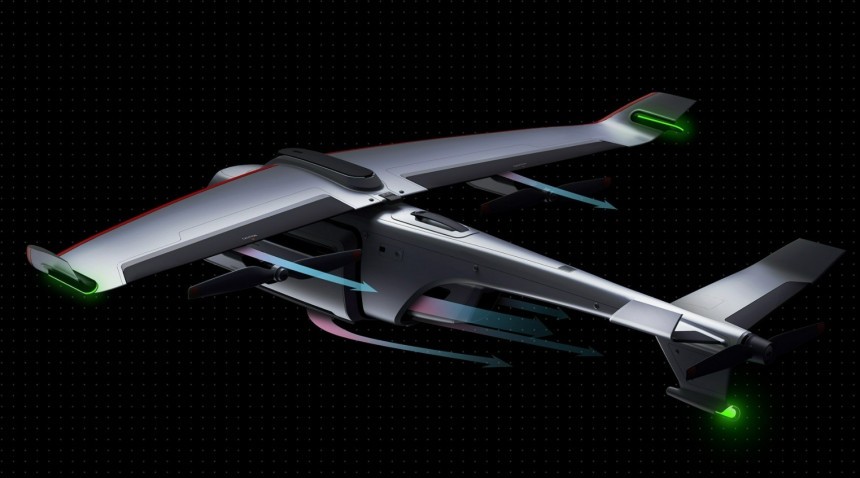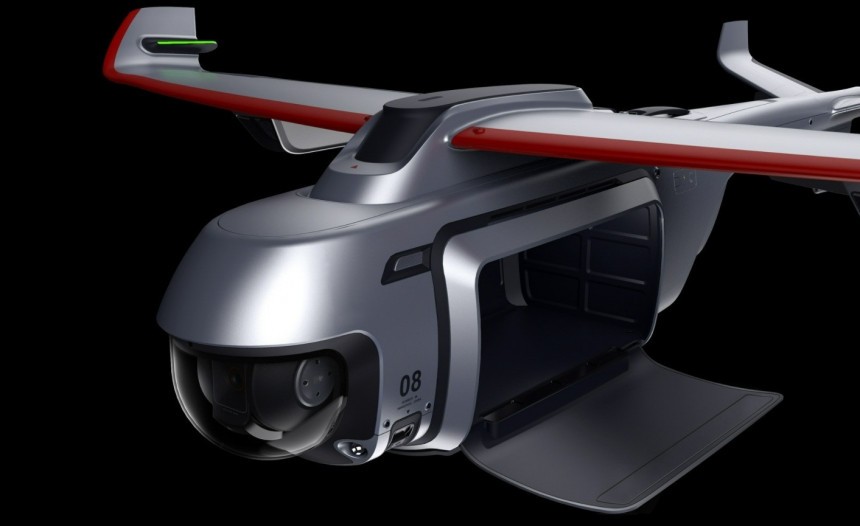Folks, there are so many UAV and drone designs on the market it's not even funny. But, somehow, design after design keeps popping up, each one promising to be the next viable machine for our needs.
One sector in which the drone and UAV industry is currently active in is the delivery sector. One designer, Qinsheng Meng, a student of Zhejiang Gongshang University, decided to bring a different spin to drone delivery by focusing on long-distance services.
This idea led to a journey that would eventually develop the DJI Express UAV, and while this design doesn't implicate DJI directly, who knows, maybe the real DJI gets a whiff of this design and buys it off Meng. Time to see what's so special about the DJI Express.
Well, one feature that makes this Express ideal for delivery is that it is designed to travel up to 300 km (186 mi). Now think about what this range means for delivery services; no longer should there be a need for countless cargo hubs. If the maximum range isn't needed to deliver a package, then the flight time of 90 minutes takes over.
This hypothetical range is granted by two systems. The first is a large battery that lays hidden in the body of Express, right where the tail begins. There is no mention of the capacity of this battery, but it is removable, meaning a full battery can take its place once drained.
The second system in place is the propulsion system. Behind each wing, you can see two propeller that aim to help the Express along. However, a third propeller is found at the very rear of the Express, helping offer a bit more control while in flight, not to mention speed and power.
Now, if we're to take a look at the overall design of the Express, you can tell that it's a bit different than your usual delivery UAV, and instead, more designed like military-use UAVs. It seems that this is the sort of long-range design that you want. With a large body meant to carry cargo, wide-spread lateral wings, a tail and fins, and the drone seems to have what it takes to become a feasible cargo solution.
Speaking of cargo, it's one of the few areas the designer chose to put in a tad more effort to design. Cargo carrying is the main reason the Express is designed the way it is; that belly is a cargo bay. The Express is to be loaded via a lateral hatch that exposes an empty interior, waiting to be filled whenever there's a need to carry cargo. Meng also mentions that this shipping style is the most favorable as it doesn't expose cargo to the exterior elements.
At the very front of the UAV, you can see an enclosed glass dome harboring a camera behind it. These are the eyes of the machine, but there are another two sets of eyes. Underneath and above the cargo bay, two strips of sensors and cameras are used to help the UAV avoid objects during flight.
Aside from the fact that this is just a conceptual design, for the time being anyway, there is one issue; there's no way to gauge how big this UAV is, and we don't know if it's meant to carry elephants, meals, or just plain envelopes. No matter the size, the final issue is that it will require a landing strip as no vertical takeoff and landing abilities are shown. At least it looks neat.
This idea led to a journey that would eventually develop the DJI Express UAV, and while this design doesn't implicate DJI directly, who knows, maybe the real DJI gets a whiff of this design and buys it off Meng. Time to see what's so special about the DJI Express.
Well, one feature that makes this Express ideal for delivery is that it is designed to travel up to 300 km (186 mi). Now think about what this range means for delivery services; no longer should there be a need for countless cargo hubs. If the maximum range isn't needed to deliver a package, then the flight time of 90 minutes takes over.
The second system in place is the propulsion system. Behind each wing, you can see two propeller that aim to help the Express along. However, a third propeller is found at the very rear of the Express, helping offer a bit more control while in flight, not to mention speed and power.
Now, if we're to take a look at the overall design of the Express, you can tell that it's a bit different than your usual delivery UAV, and instead, more designed like military-use UAVs. It seems that this is the sort of long-range design that you want. With a large body meant to carry cargo, wide-spread lateral wings, a tail and fins, and the drone seems to have what it takes to become a feasible cargo solution.
At the very front of the UAV, you can see an enclosed glass dome harboring a camera behind it. These are the eyes of the machine, but there are another two sets of eyes. Underneath and above the cargo bay, two strips of sensors and cameras are used to help the UAV avoid objects during flight.
Aside from the fact that this is just a conceptual design, for the time being anyway, there is one issue; there's no way to gauge how big this UAV is, and we don't know if it's meant to carry elephants, meals, or just plain envelopes. No matter the size, the final issue is that it will require a landing strip as no vertical takeoff and landing abilities are shown. At least it looks neat.
















